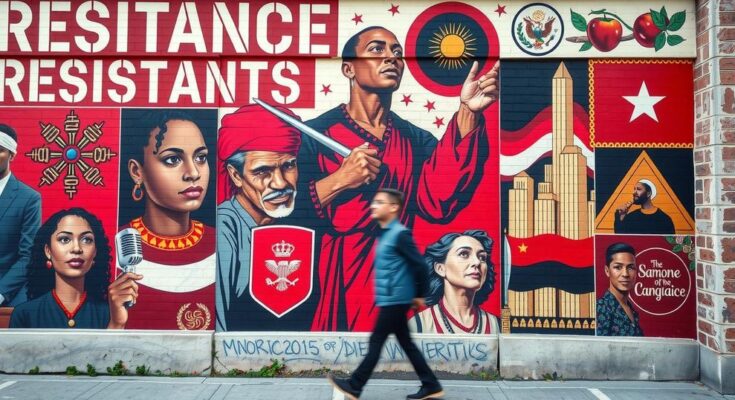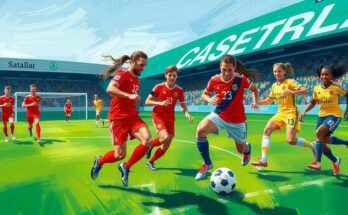This article explores the enduring legacy of Chilean murals from the Popular Unity government, particularly through the insights of muralist Alejandro ‘Mono’ Gonzalez. It highlights how these works faced repression but continued to influence global artistic movements, emphasizing the role of art in political education and cultural resistance.
The murals that flourished during Chile’s Popular Unity government, though suppressed at home, inspired a global legacy. This article delves into their lasting political impact and features an interview with prominent muralist Alejandro ‘Mono’ Gonzalez, reflecting on the significance of these works in cross-cultural contexts.
Meeting at Santiago’s National Library, Mono discussed the exhibition ‘Patria Negra y Roja’ dedicated to Chilean painter José Venturelli. Venturelli, a lifelong communist and early assistant to Mexican muralist David Alfaro Siqueiros, emerged as a key cultural ambassador during the early revolutionary movements across Latin America. Mono highlighted the vibrant cultural atmosphere of the 1960s, noting diverse musical and literary movements that propelled revolutionary sentiment.
He emphasized the profound influence of the 1968 protests in Mexico, referencing the large-scale student massacres and subsequent uprisings that inspired political movements throughout Latin America, including Chile. Mono described how artistic grassroots movements, particularly mural brigades affiliated with the Communist Party of Chile, creatively responded to political repression through art, which played a critical role in political mobilization during that period.
The Popular Unity coalition, led by Salvador Allende, sought radical reforms, including nationalization of primary resources and establishment of cultural institutions like the Museo de la Solidaridad, aimed at fostering international art donations. Although Allende’s presidency ended with a violent coup led by General Augusto Pinochet in 1973, the artistic traditions established during his regime persisted, with cultural workers abroad reviving these styles even under authoritarian rule.
Despite efforts to erase the revolutionary influence, Chilean muralism spread globally, particularly among exiles. Mono remarked on how the aesthetic transcended geographical boundaries, impacting artists in Mozambique and beyond, whose experiences remained crucial but often undocumented. Despite the passage of decades since the coup, Mono actively continues to share his art, focusing on design and education, believing that art remains a vital medium for political expression.
Currently, he is engaged in creating accessible art forms, such as posters, while mentoring young artists to keep cultural resistance alive. Mono advocates for art’s role in addressing contemporary social issues, manifesting his belief that creativity must serve the people’s struggles, regardless of geographical context.
The article underscores the transformative power of art, particularly in the face of repression and historical challenges. Alejandro ‘Mono’ Gonzalez’s reflections highlight the enduring legacy of Chilean muralism, which has not only survived political turmoil but has also influenced global artistic movements. Despite the challenges faced, the commitment to utilizing art as a tool for political education and cultural resistance remains a steadfast endeavor. It prompts a reflection on how creativity shapes and responds to social and political contexts, reinforcing the necessity of retaining historical consciousness in cultural expressions.
Original Source: thetricontinental.org




